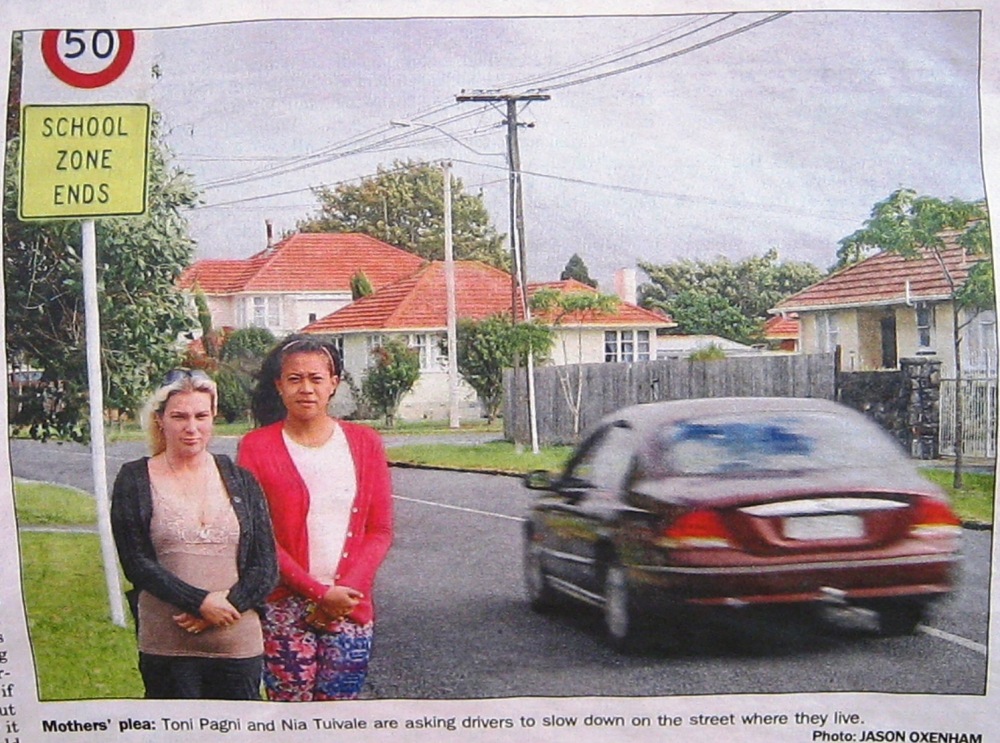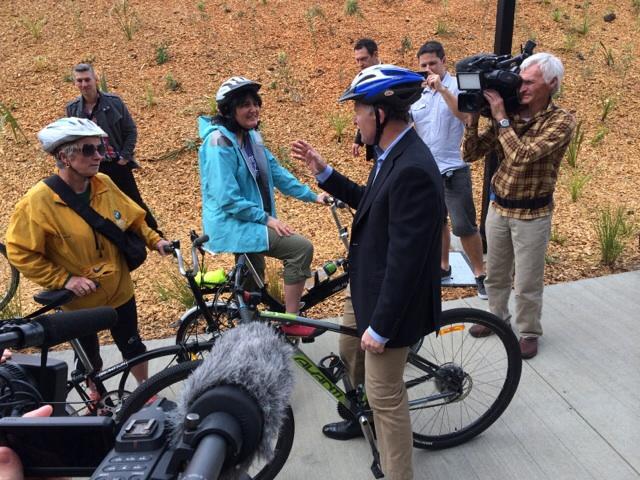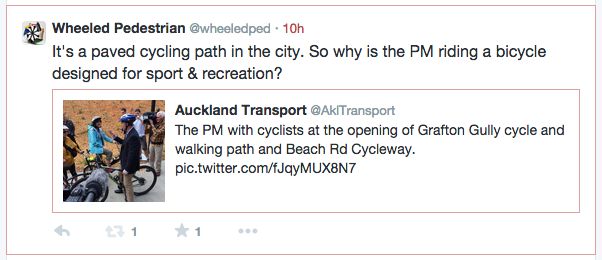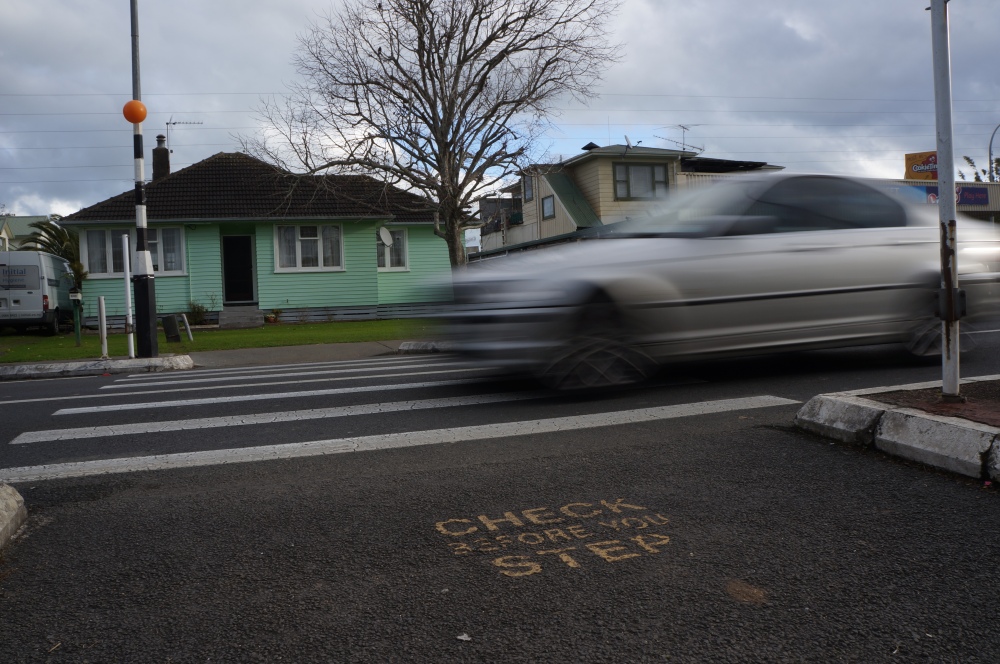A long time ago, I drafted this blog post but never officially published it. It was a story I picked up from the local community newspaper. Two mothers were concerned that cars on the residential street they lived on, were traveling in excess of 80kph. The speed limit is 50kph and the street is in a school zone.
“They fly through here. I don’t let my girls play out the front – I won’t even let them go to the letter box”. The street is used as a ‘rat run’. The women were planning to approach Auckland Transport to see if there was anything that could be done. I think the street has had speed bumps installed since then. I wonder if that made a difference.
At the time of writing it initially, I was not confident enough in my convictions to publish it. That’s since changed. I think it is no longer heresy to suggest that it will be demand and traffic calming rather than design and bike lanes that will make the biggest contribution to getting more people riding bicycles. Below, is the remainder of the original post. I have left it as I originally wrote it (apart from the inclusion of a link to a recent Wheeled Pedestrian post). Why? Because I have being going through the site’s archives recently to see if I have strayed from my original intentions. And I must say that I have been pleasantly surprised to see that my original observations and beliefs still hold true. However, being confident in my convictions is one thing. Convincing others of the merit of these convictions is a completely different matter. When you are in a hurry, progress is a relative thing.
It went like this…
A similar scenario plays out throughout Auckland and the rest of New Zealand. The Death Star, revealed in all its glory. And in the context of promoting cycling as a serious transport form, it should be clear by now, that cycling will remain the preserve of the ‘brave and fearless’ while this dominant car culture remains unchallenged. These mothers won’t let their children out on the front lawn, let alone ride a bike.
So while quality separated cycle lanes is what’s required to get people riding bikes, it is not going to make any significant difference until the issues of speed, that these two mothers are concerned about, are addressed fully. In fact, I would be so bold as to suggest that addressing the issues of speed need to take place before the introduction of cycle infrastructure. Or at least they need to happen in tandem. Because regardless of the quality of a cycle lane, it is the element of subjective safety that will determine whether individual members of the public will feel safe to use the infrastructure.
That’s why the ‘build it and they will come’ approach needs to be taken at face value. Any quality infrastructure needs to be matched with a high provision of subjective safety. A significant reduction in speed will go someway to addressing that. In The Netherlands, the ‘Stop the Child Murder’ Campaign was the precursor to the bicycle infrastructure and culture that the country is now renowned for. Until something similar happens in New Zealand, our dreams of a cycling revolution will remain only dreams. If cycle lanes are built, they will remain largely empty.
‘Cycling’ is sport and recreation. ‘Riding a bicycle’ is everyday activity. No sweat. As easy as walking, but faster.
Get involved via: Twitter, Facebook, Flickr, Vine or Instagram.












